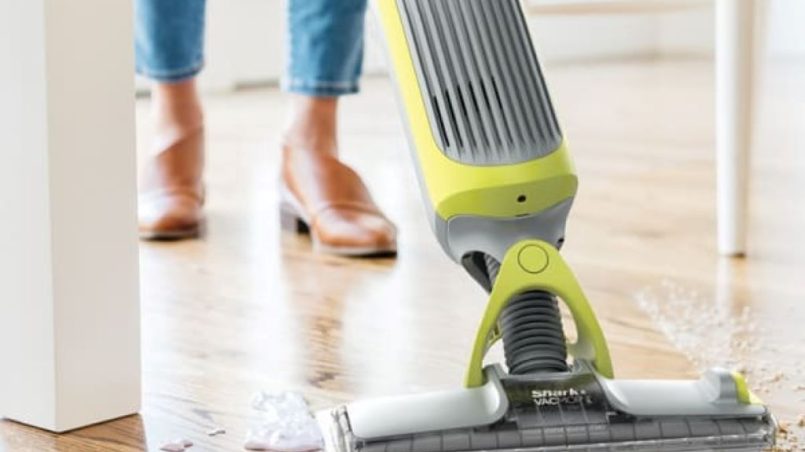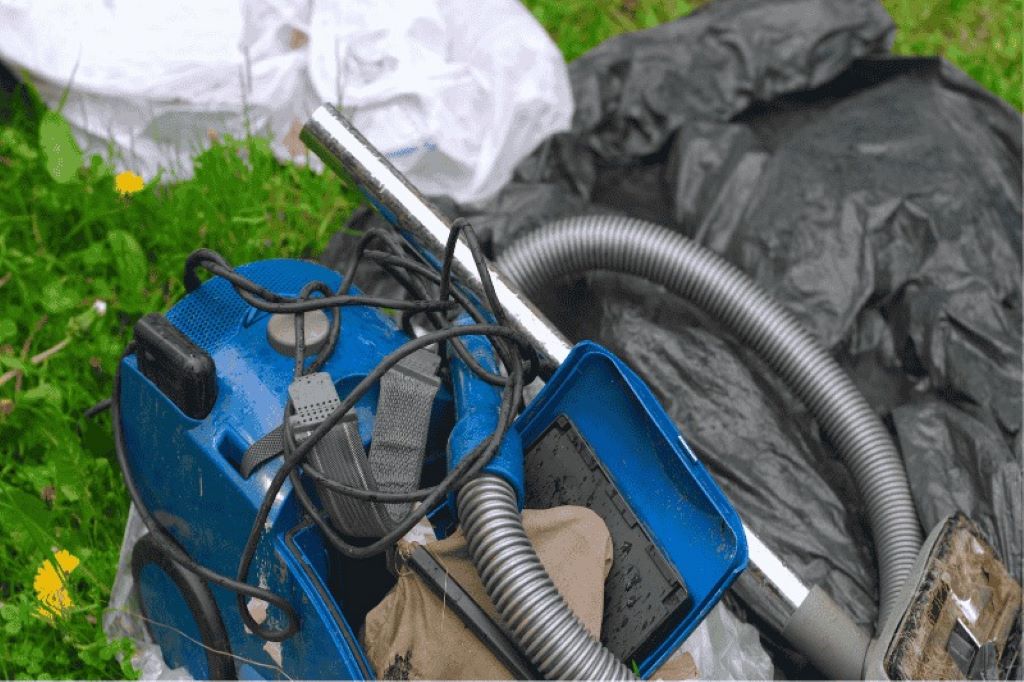Shark vacuum cleaners are popular for their powerful suction and sleek designs, making them a top choice for many households. However, when it’s time to replace your vacuum, you may wonder how to dispose of it responsibly. At Best Vacuum Cleaner, we believe in promoting eco-friendly practices to reduce waste and protect the environment. This guide explores sustainable ways to dispose of your Shark vacuum cleaner, ensuring you make environmentally conscious choices while keeping your home clean and clutter-free.
Understanding the Need for Eco-Friendly Disposal
Vacuum cleaners, including Shark models, contain a mix of materials like plastic, metal, and electronic components. Improper disposal can harm the environment by contributing to landfill waste or releasing toxic substances. Therefore, understanding how to dispose of these appliances responsibly is crucial. Many users ask, “Are Shark vacuum cleaners recyclable or not?” The answer depends on local recycling programs and the vacuum’s components. For detailed guidance, check out this resource on how to dispose of old vacuum cleaners safely and responsibly. By following eco-friendly disposal methods, you can minimize your environmental footprint.
Are Shark Vacuum Cleaners Recyclable?
Shark vacuum cleaners are partially recyclable, but the process isn’t always straightforward. Most models contain recyclable materials like metals and certain plastics. However, components like batteries or electronic circuits require special handling due to hazardous substances. Before recycling, check with your local waste management facility to confirm what parts they accept. Some areas have specific programs for small appliances, while others may require you to dismantle the vacuum. Always remove non-recyclable parts, such as filters or bags, to avoid contaminating recyclable materials.
Steps to Prepare Your Shark Vacuum for Disposal
Proper preparation ensures your Shark vacuum is ready for recycling or disposal. Follow these steps to streamline the process:
- Clean the Vacuum: Empty the dustbin and remove any debris from the filters or attachments. A clean vacuum is easier to recycle and safer for handling.
- Remove Batteries: If your Shark vacuum is cordless, remove the battery. Many recycling centers have separate processes for lithium-ion batteries.
- Check for Reusable Parts: Some components, like hoses or attachments, may still be functional. Consider donating these to repair shops or DIY enthusiasts.
- Label Non-Recyclable Parts: Identify parts like foam filters that may not be recyclable and dispose of them according to local guidelines.
By preparing your vacuum properly, you make it easier for recycling facilities to process the materials efficiently.
Recycling Options for Shark Vacuum Cleaners
Recycling is one of the most eco-friendly ways to dispose of your Shark vacuum. Here are some options to consider:
Local Recycling Programs
Many municipalities offer recycling programs for small appliances. Contact your local waste management authority to find drop-off locations or collection events. Some programs partner with organizations like RecycleNation to provide searchable databases for recycling centers near you. Always call ahead to confirm they accept vacuum cleaners and inquire about any fees.
Manufacturer Take-Back Programs
Shark and other vacuum brands sometimes offer take-back programs for old appliances. These programs allow you to return your vacuum to the manufacturer for proper recycling or refurbishment. Visit Shark’s official website or contact their customer service to check for available programs. If none exist, look for retailers like Best Buy or Walmart, which often have appliance recycling initiatives.
Electronic Waste Facilities
Since Shark vacuums contain electronic components, e-waste facilities are a viable option. These centers specialize in handling devices with circuit boards or batteries. Search for certified e-waste recyclers in your area to ensure compliance with environmental regulations. This step is especially important for cordless models with rechargeable batteries.
Donating or Repurposing Your Shark Vacuum
If your Shark vacuum is still functional, consider donating or repurposing it instead of recycling. Donation extends the vacuum’s lifespan, reducing waste. Here are some ideas:
- Charity Organizations: Nonprofits like Goodwill or Salvation Army often accept working appliances. Call ahead to confirm they take vacuums.
- Community Groups: Local schools, shelters, or community centers may need functional vacuums for their facilities.
- Repurposing Parts: Creative individuals can repurpose vacuum parts for DIY projects. For example, motors can be used in homemade tools, while plastic components may serve as storage containers.
Donating or repurposing keeps usable items out of landfills and supports your community.
Safe Disposal of Non-Recyclable Parts
Not all parts of a Shark vacuum are recyclable. Foam filters, fabric bags, or worn-out plastic components may need to go to a landfill. To dispose of these safely:
- Place non-recyclable parts in a sealed bag to prevent debris from spreading.
- Follow local guidelines for household waste disposal.
- Avoid burning or dumping parts illegally, as this can release harmful chemicals into the environment.
For hazardous components like batteries, never throw them in the trash. Instead, take them to a designated battery recycling drop-off, often available at hardware stores or e-waste centers.
Environmental Impact of Proper Disposal
Proper disposal of your Shark vacuum has significant environmental benefits. Recycling conserves raw materials, reduces energy consumption, and prevents toxic substances from polluting soil and water. According to the Environmental Protection Agency (EPA), recycling one ton of plastic can save up to 7.4 cubic yards of landfill space. Additionally, recovering metals from electronics reduces the need for mining, which has a high environmental cost. By choosing eco-friendly disposal, you contribute to a cleaner planet.
Tips for Choosing an Eco-Friendly Vacuum in the Future
When replacing your Shark vacuum, consider models designed with sustainability in mind. Look for:
- Recyclable Materials: Choose vacuums with components that are easier to recycle.
- Energy Efficiency: Opt for energy-efficient models to reduce your carbon footprint during use.
- Durable Designs: Invest in a vacuum built to last, minimizing the need for frequent replacements.
Research brands with strong environmental commitments to align your purchase with eco-friendly values.
Conclusion
Disposing of your Shark vacuum cleaner responsibly is a simple yet impactful way to protect the environment. By understanding whether Shark vacuum cleaners are recyclable, preparing the appliance properly, and exploring recycling or donation options, you can reduce waste and conserve resources. Always check local guidelines and consider manufacturer programs or e-waste facilities for safe disposal. Choosing eco-friendly practices today ensures a cleaner, greener tomorrow.
Frequently Asked Questions
Can I put my Shark vacuum in the regular trash?
No, avoid throwing your Shark vacuum in the regular trash. It contains recyclable materials and hazardous components like batteries that require special handling.
Are Shark vacuum batteries recyclable?
Yes, Shark vacuum batteries, typically lithium-ion, are recyclable. Take them to a designated battery recycling drop-off or e-waste facility.
Where can I recycle my Shark vacuum cleaner?
Check with local recycling programs, e-waste facilities, or manufacturer take-back programs. Retailers like Best Buy may also accept old vacuums.
Can I donate a working Shark vacuum?
Yes, if the vacuum is functional, donate it to charities like Goodwill or local community groups. Confirm they accept appliances first.
How do I know which parts of my Shark vacuum are recyclable?
Contact your local recycling center to confirm which materials they accept. Metals and some plastics are typically recyclable, but filters may not be.
Read More:


